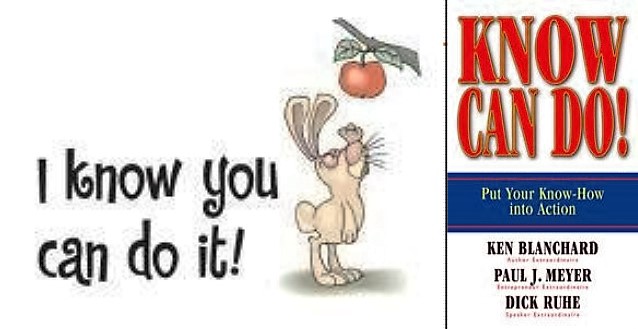In the book, Know Can Do, the authors (Blanchard, Meyer and Ruhe) outline 3 basic obstacles that prevent people from implementing what they learn. These obstacles are:
- Information Overload – trying to learn too much about too many things
- Negative Filtering – engaging in negative thought processes that prevent opening our minds to opportunities
- Lack of Follow-up – not having a plan to put the new knowledge into action.
The authors address these obstacles by closing the knowing-doing gap through these steps:
- Learning smaller bits of information more frequently instead of learning larger chunks of information less frequently
- Listening with a positive mindset
- Implementing “Positive thinking through coaching, reflection and review.
This approach is strikingly similar to the Toyota Kata: Managing People for Improvement, Adaptiveness and Superior Results by Mike Rother and by studying this can really enhance your efforts in implementing Kata. The first step of Know-Can-Do (KCD) is very, very similar to Kata. Small iterations are more effective than taking large leaps. The second step of KCD I think is the best learning point that the Kata people can draw from this exercise. The positive mindset approach and I will stop short of saying Appreciative Inquiry but again striking similar, always focusing on the positive steps. Moving on to step 3, the implementation does not happen without reinforcement and primarily through coaching. Which I believe is the most positive trait of the Toyota Kata process.
From the YouTube Description: Listen to this excerpt from the audiobook Know Can Do! How to Put Learning Into Action, by Ken Blanchard, Paul J. Meyer, and Dick Ruhe. Attempting to better themselves—learn new skills, break bad habits—people read books, attend seminars, take training courses. But in spite of what they sincerely believe are their best efforts, their behavior doesn’t change. It’s an endless source of frustration for organizations and individuals.
[arve url=”https://www.youtube.com/embed/N5x3w-bjKKc”/]

